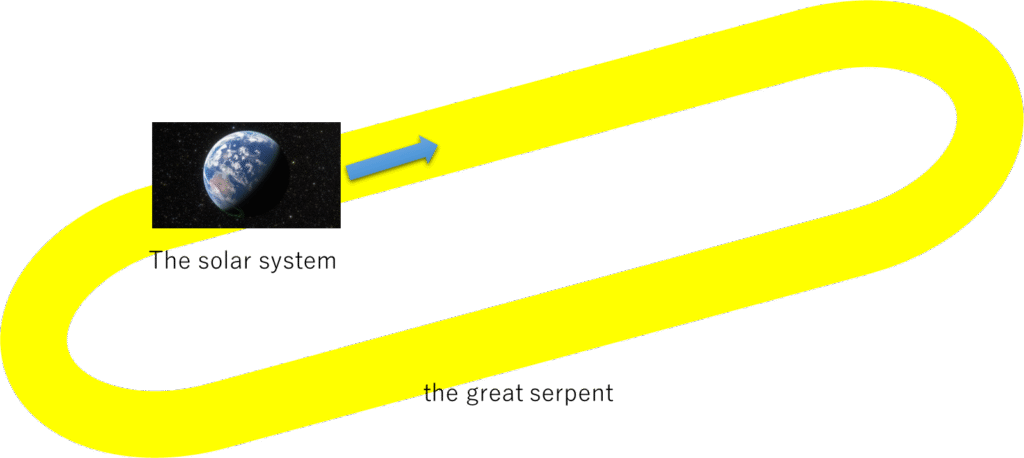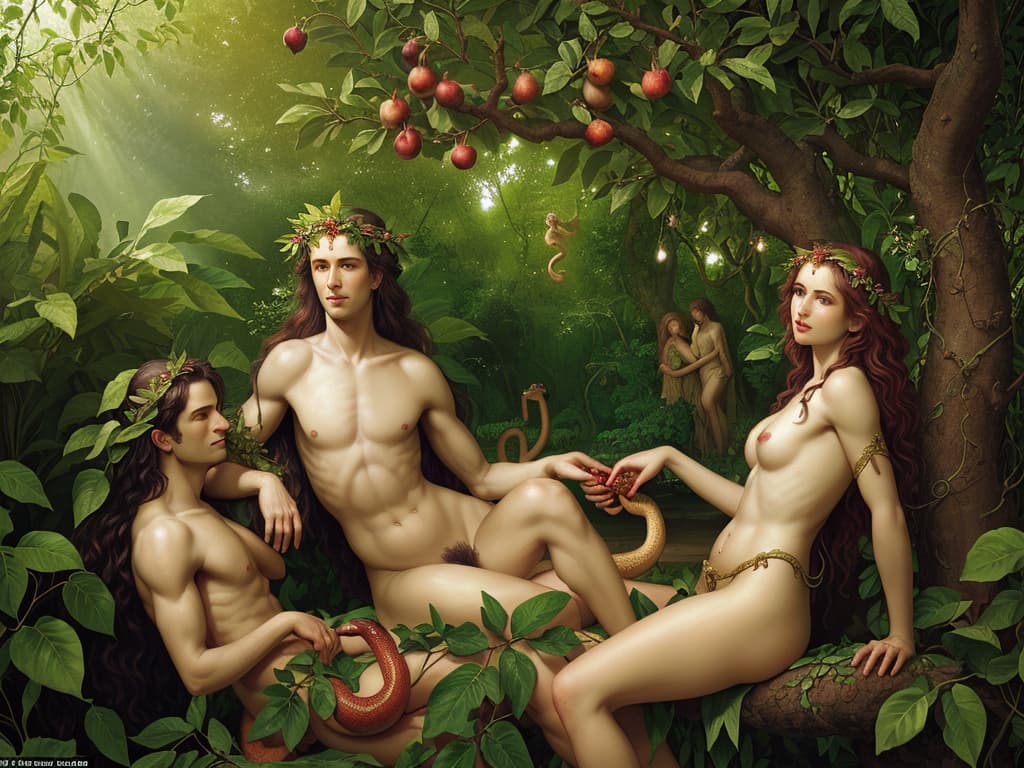On the Birth of the Earth
According to OAHSPE, there exists a celestial pathway known as “The Great Serpent”, which refers to the orbital route of planetary systems across the universe. Along this pathway, many solar systems—including our own—are positioned.
The orbit of the Great Serpent is divided into segments, each spanning approximately 3,000 Earth years, and these divisions are called “arcs.” For each arc, a high-ranking archangel is appointed to oversee and manage it. When the solar system transitions from one arc to another, it is said that the assigned archangel bestows “light” or divine grace upon the inhabitants of Earth.

It is written that a complete cycle around the orbit of the Great Serpent takes approximately 4,007,000 years (OAHSPE Book of Jehovih, Chapter 7, Verse 2).
As for the origin of our planet, OAHSPE explains that the Earth began as a swirling mass of steam. This vortex eventually condensed into a giant ball of fire. Once this fiery sphere was set into its designated planetary orbit, the history of the Earth officially began.
After the planet’s form had been shaped, a substance known as “se’mu”, which is described as the primal essence of life, was introduced to the Earth. From this se’mu, a great variety of life forms emerged. Among them were the Asu (The Asus)—believed to be the ancestors of modern humanity.
About the I’hins, Children of the Angels
The first humans to appear on Earth, known as the Asu (The Asus), were initially so undeveloped that they could not even stand upright. In response, the Creator sent angels to Earth to support and guide them.
Since angels are spiritual beings, they were invisible to the eyes of the Asu. To interact with humans directly, the angels used a substance called se‘mu to make physical bodies, allowing them to live among the Asu as fellow beings.

This se’mu was abundant during the early stages of Earth’s formation, enabling the angels to freely form bodies from it. However, over time, the quantity of se’mu gradually diminished, until it eventually disappeared completely from the Earth.
At the time, the Creator gave the angels the following warning:
And I said: Go ye forth and partake of all that is on the earth; but partake ye not of the tree of life, lest in that labor ye become procreators and as if dead to the heavens whence ye came.
(OAHSPE, Book of Jehovih :Chapter:6–17)

While this may sound similar to the story of Adam and Eve in the Book of Genesis, the message is quite different. The Creator was not forbidding knowledge, but rather cautioning the angels: if they engaged in reproduction, they would become emotionally bound to their offspring and lose the ability to return to their original heavenly state.
Despite this warning, the angels did have children with the Asu. These children were known as the I’hins—spiritually gifted beings who were deeply loved by the gods.
For defying the Creator’s command, the angels were given a punishment: they were required to care for their offspring and remain on Earth for six generations. Only after faithfully fulfilling this responsibility were they permitted to return to the heavens.
To prevent angels from repeating this act, the Creator eventually removed all remaining se’mu from Earth. From that point on, it became impossible to create new beings in the same way.
The Dark-Born Race — The Druks
The I’hins were a people who could hear the voice of God. Guided by divine instruction, they lived their lives in accordance with spiritual laws and celestial order.
At that time, Earth was overseen by a god appointed by the Creator. This god did not govern the entire planet alone, but divided the Earth into several districts, assigning subordinate chief gods (Gods) to manage each one. These chief gods gave strict commands to the I’hins, including a rule that forbade interaction with the Asu, the early primitive humans.

However, some among the I’hins disobeyed this command and began associating with the Asu, even bearing children with them. The offspring of these unions were called Druks. Unlike the spiritually gifted I’hins, the Druks lacked spiritual awareness. They were rough in nature, prone to violence, and often engaged in conflict and bloodshed.
When the chief gods became aware that some I’hins had broken the divine law, they introduced the practice of circumcision as a sign of obedience. This ritual, performed in infancy by cutting the foreskin of the male organ, became a way to distinguish those who still followed the sacred law from those who did not.
In this way, the I’hins returned to faithfully following the commands of the gods. However, the problem of the Druks remained. They rejected spiritual teachings and became increasingly aggressive and unteachable.
To address this, the chief gods instructed the I’hins to undertake the task of reforming the Druks. From the unions between these two groups, a new race was born—the I’huans. These I’huans are believed to be the ancestors of modern humanity.
The Present-Day Humans—The I’huans, and the Dark-Born Yaks
The I’huans are the descendants born from the union between the I’hins and the Druks. Physically robust and strong, the I’huans were appointed by the chief gods to serve as protectors of the I’hins.
Meanwhile, the Druks also mated not only with the I’hins but with the Asu, the earliest humans. From these unions, a distinct group of offspring emerged—known as the Yaks. The Yaks were markedly different from other human types. Most notably, they were born without reproductive ability.
As a result, the Yaks came to be used by the I’hins as slaves or eunuchs. This was the unfortunate fate they inherited, shaped by both their origins and their nature.
The Genealogy of Humankind (Summary)
The lineage of humanity—from the first humans, the Asu, to the present-day I’huans—can be summarized as shown in the diagram below.

References, Images used
| Books | authors | publishers |
|---|---|---|
| OAHSPE ”A New Bible in the Worlds of Jehofih and His angel embassadors.” | John B. Newbrough | OAHSPE PUBLISHING ASSOCIATION |
Image:stable diffusion(model:etherRealMix_etherRealMix4.safetensors)
Image:stable diffusion(model:XSMerge-RealisticVisionV3-ForArchi)



コメント